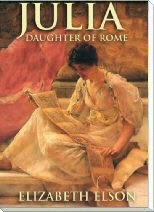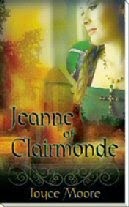Thank you, Joyce, for inviting me to share a historical episode with the readers of your blog today.
When I discovered that the brilliant Rabbi Meir of Rothenberg was my ancestor, the first event in his life that moved me to consider writing The Fruit of Her Hands was when he witnessed the burning of the Talmud in Paris in 1242.
The Talmud, for those who may not know, is a multi-volume work, a record of Rabbinical discussion about the Torah, Jewish customs and laws, that spanned many generations.
How would a 24-year old scholar of Meir’s obvious intelligence approach such a tragedy? We know from the elegy he wrote ― in fine, medieval tradition ― that he was devastated. He couldn’t eat, couldn’t comprehend the cruelty visited upon his people.
And why was he forced to face it? To learn why the Jews of Paris lost every volume of the Talmud to the flames, it is important to understand that Jewish-Christian relations were undergoing a significant change during this century. Until the 1240s, Christians had frankly ambivalent feelings toward them. Jews had Christian neighbors. Rather than living in ghettos, they had to wear badges or hats so Christians could tell them apart.
But the idea of the Talmud never occurred to these Christians. They thought that Jews lived just as they had during the time of Christ, that their religion remained an artifact from Temple days. As long as long as the Torah, which had preceded Christ, was the only religious document, the Christians felt the Jews would eventually be won over to the “true” faith.
But in the 1200s, Christians began to discover the Jews had not frozen in time. Instead, they had continued to evolve their religion by constant study and debate, which centered around the Talmud. Some of their knowledge of the Talmud came from converts to Christianity, such as Nicholas Donin. Donin had upset his teachers by radical beliefs and the leader of the Paris yeshiva, Rabbi Yechiel, finally took the extreme step and excommunicated Donin.
Donin converted to Christianity, became a Franciscan friar and sought revenge. He egged Crusaders on to massacre Jews while on their way to fight in the Holy Land, precipitating pogroms in Brittany, Anjou, Poitou, and Aquitaine. But then Donin sought to harm the Jews in an even more fundamental way – through threats to their sacred texts. He convinced the Pope that the Talmud needed to be examined, that it contained terrible errors and slurs against Christ himself. The Pope wrote to the kings of Europe, instructing them to investigate. And the result, in Paris, was the seizure of every volume of the Talmud and a disputation ― a religious trial ― between the Rabbi Yechiel of Paris and Nicholas Donin.
While the Rabbi Yechiel did his best, his was an impossible task. Donin convinced the French court that the Talmud was a dangerous document that deserved destruction. And so, on a bright June day in 1242, Meir watched as every volume was consumed by flame.
Christian-Jewish relations continued to spin downhill from this point, degrading into a cycle of persecution that would culminate in the horrors of the Holocaust. But Meir would recover from his personal crisis of faith through the catharsis of the elegy he wrote. Meir of Rothenberg would become the foremost Talmudic scholar of his age and would live his life in a manner that still influences our Jewish roots.
To learn more about Meir, Nicholas Donin, and the burning of the Talmud – as well as other events in Meir’s life – I’d like to invite your readers to visit my Web site at http://www.michelle-cameron.com/ and to read The Fruit of Her Hands: the story of Shira of Ashkenaz, published by Pocket Books (a division of Simon & Schuster).
Thanks again, Joyce, for letting me stop by your blog!
Friday, September 25, 2009
Tuesday, September 22, 2009
Winner from Coffee Time Announced
TaDumm... Hear Ye, Hear Ye! The winner's name, drawn by my sister this time, is Missy Roth. To the rest of you, thanks for the comments, and watch this website. I'll be giving more gift certificates later for contests and comments.
Missy, please email me privately. You can reach me from my Author page on my website. Just click the feather. Congratulations!
Missy, please email me privately. You can reach me from my Author page on my website. Just click the feather. Congratulations!
Thursday, September 17, 2009
Win a $25 Gift Certificate

Hi Readers: On Friday, Sept. 18th,I'll be blogging all day on Coffee Time Romance and More, about various subjects:a low-cost travel secret, the importance of conferences, landing an agent, and a blog about my new release, Jeanne of Clairmonde, a medieval romance. From those who leave a comment, I'll be drawing a name, and the lucky winner will have a $25 gift certificate for a piece of designer jewelry by a glass artisan who makes one-of-a-kind jewelry designs. Here's a sample from her website. Don't forget, Friday the 18th on Coffee Time Romance. I'll be looking for you there.
Colorado Gold Conference
Hi Readers: I just returned from a great writers' conference in Denver. The weather was fantastic and I spent a glorious weekend networking with writers and learning more about the craft. There's always something new, and at times like this, with the rapid changes in the industry and in technology, it's more important than ever to keep abreast of what's going on in our book community. As if the awesome classes on marketing and a two-part pitch workshop by an agent (where she listened to pitches and made suggestions as to how they could be improved) weren't enough, I shared a table at the bar with agents and editors. Talk about an adrenaline rush! I admit it--I'm a conference junkie, and am already looking forward to the S.C. Writers Workshop in October at Myrtle Beach. Hope to see some of you there.
Tuesday, September 8, 2009
I've picked a Winner!
Tuesday, September 1, 2009
History of Hankies
 Most people think of handkerchiefs as coming into use in Victorian times, but they have a very long history. In Classical Greece, a cloth like our handkerchief was called a ‘mouth cloth’ or a ‘perspiration cloth’, an item used by the wealthy.
Most people think of handkerchiefs as coming into use in Victorian times, but they have a very long history. In Classical Greece, a cloth like our handkerchief was called a ‘mouth cloth’ or a ‘perspiration cloth’, an item used by the wealthy.In 1 B.C., Roman men of high rank wiped sweat with an oblong piece of linen, called a sudarium. During the Roman Empire, women began to keep cotton or silk cloths close at hand, to blot anything as unwomanly as perspiration from their brows, a constant bother while attending a festival or tournament of gladiators in a hot, dusty arena.
In the Byzantine era, at the beginning of a spectacle, the emperor dropped a white cloth, not different from today’s handkerchief, to signal the beginning of the games.
When tournaments became more civilized, frequented by knights and squires in a more restrained atmosphere, a combatant would wear a lady’s cloth to show the favor of an admirer. Renaissance women referred to the personal item as a ‘napkyn’. When I was a child, my mother tied our church offering (coins) in one corner of our handkerchief when we went to Sunday School so we wouldn’t lose the offering before the plate was passed.
I’d love to hear from any readers about any “handkerchief” memories they may have, whether serious or humorous.
Subscribe to:
Posts (Atom)








